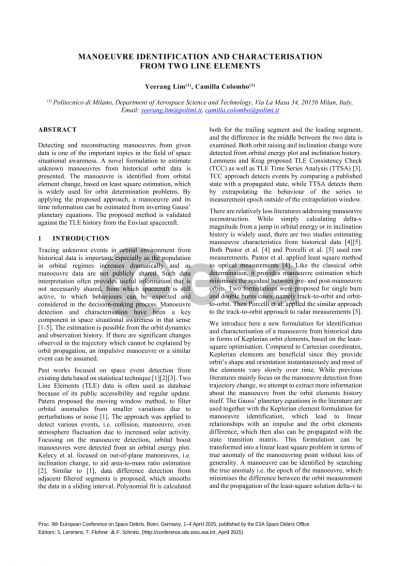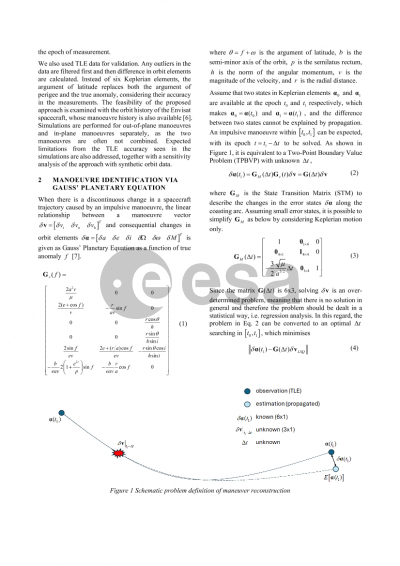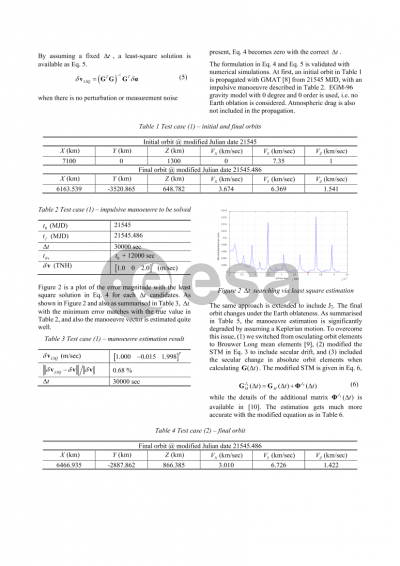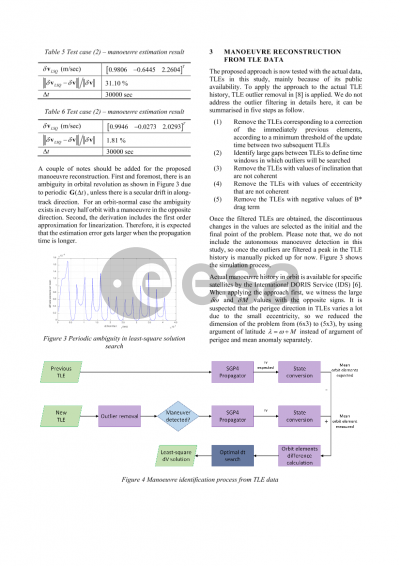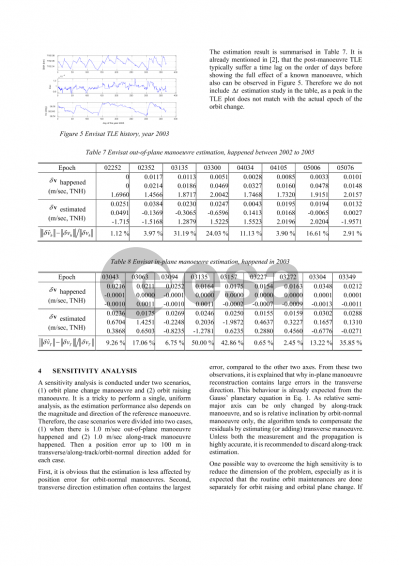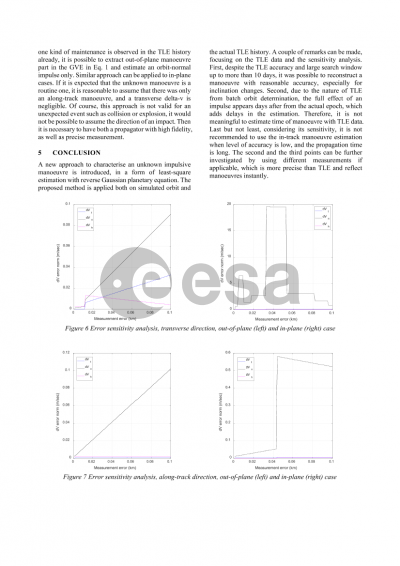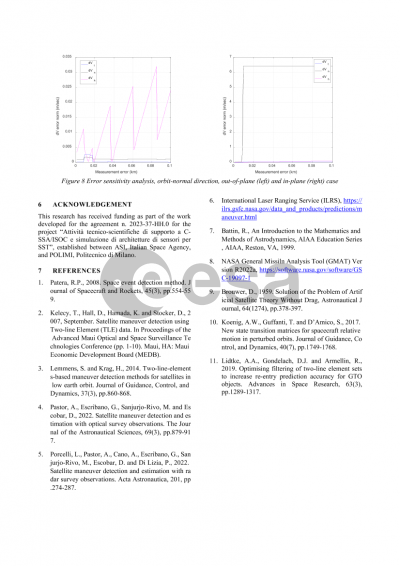Document details

Abstract
Manoeuvre detection and characterisation are essential to space situational awareness, to comprehend an unknown event in orbit. The estimation is possible from the orbit dynamics and observation history. If there are significant changes observed in the trajectory which cannot be explained by orbit propagation, an impulsive manoeuvre or a similar event can be assumed.
Identification and characterisation of a manoeuvre from measurements in forms of Keplerian orbit elements is introduced in this paper. Compared to Cartesian coordinates, Keplerian elements are beneficial since they provide orbit’s shape and orientation instantaneously and most of the elements vary slowly over time. While previous literatures mainly focus on the manoeuvre detection from trajectory change, we attempt to extract more information about the manoeuvre from the orbit elements history. The Gauss’ planetary equations in the literature is used together with the Keplerian elements for manoeuvre identification, which lead to linear relationships with an impulse and the orbit elements difference, which then also can be propagated with the state transition matrix. This formulation can be transformed into a linear least square problem in terms of true anomaly of the manoeuvring point without loss of generality. A manoeuvre can be identified by searching true anomaly i.e. epoch of manoeuvre, which minimizes the difference between the orbit measurement and the propagation of the least-square solution delta-v to the epoch of measurement.
In this work, Two Line Elements (TLE) data is used for orbit measurement because of its public accessibility and regular update. Any outliers in the data are filtered first and then difference in orbit elements are calculated. Instead of six Keplerian elements, argument of latitude replaces both argument of perigee and true anomaly, considering their accuracy in the measurements. Feasibility of the proposed approach is examined with the orbit history of the Envisat spacecraft, whose manoeuvre history is also available. Simulations are performed for out-of-plane manoeuvres and in-plane manoeuvres separately, as the two manoeuvres are often not combined. Expected limitations from the TLE accuracy seen in the simulations are also addressed, together with sensitivity analysis of the approach with synthetic orbit data.
Preview
